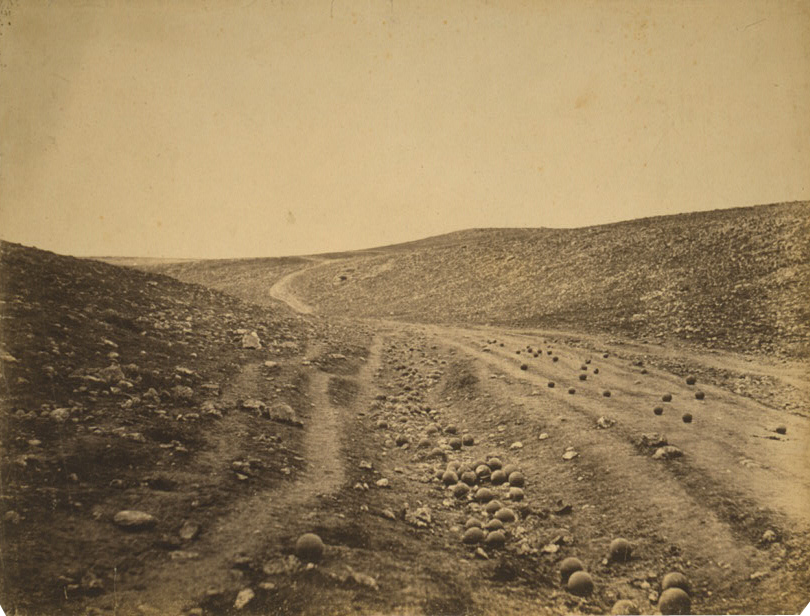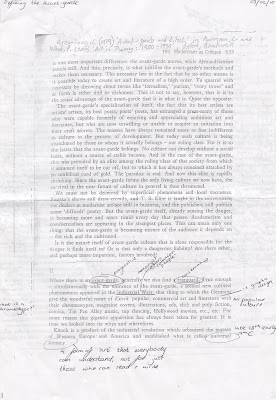Thursday, 3 June 2010
Wednesday, 24 March 2010
Repin


 Repin was a leading Russian painter in the 19th century. His work concentrated quite highly on his country of origin which was the Ukrain. Much of his work portrayed the dedication that he had for his country, often showing realistic paintings of important events such as moments within the Russian revolutionary movement.
Repin was a leading Russian painter in the 19th century. His work concentrated quite highly on his country of origin which was the Ukrain. Much of his work portrayed the dedication that he had for his country, often showing realistic paintings of important events such as moments within the Russian revolutionary movement.Tuesday, 23 March 2010
Norman Rockwell - The Saturday Evening Post cover



Thursday, 7 January 2010
Lecture Five
- James Nachewey - never denies his intervention in the image
- Frances Frith - denied he had any intervention at all
i.e. photographer always influences what they are photographing
- William Edward Kilburn, 'great chartist...' 1848 - no influence, a historical fact - dangerous
Always have a reason for taking a photo even neutral photos - Roger Fenton,1855, 'Into the valley...' - title makes you view the photo differently
- Roger Fenton,1855, 'Into the valley...' - title makes you view the photo differently
'photograph achieves at its highest distinction, reflecting the universality of the human condition in a never to be retrieved fraction of a second'- Henri Cartier Bresson France 1932
but
It is still influenced by the photographers eye
- Jacob Riis, 1888, bandits roast- all are aware of photographer- obvious construction
1887, 'a growler gang in session (robbing a lush)' all quite obviously staged
- Lewis Hine, Russian steel workers, Honestead, Pa, 1908 'child labourers in glass works, indiana'
FSA photgraphers, 1935- 44
- Director Roy Stryker
- Depression 11million unemployed
- Mass migration of farm labourers (oakies)
- The photograph as both photojournalism and emotive lobbying tool
- Included shooting scripts
- Margaret Bourke-White, 'Sharecroppers Home' 1937 - images of ads vs poor child
- Russel Lee ' Interior of a black farmers house' 1939
 - Dorothea Lange, 1936, 'Migrant mother' compared to Raphael 'Mother and child'
- Dorothea Lange, 1936, 'Migrant mother' compared to Raphael 'Mother and child'- Walker Evans
- Robert Frank
- John Lamprey
- Carl Damman
- Cesare Lombroso ' portrait of melancholy' 1890
War/conflict photography
- Robert Capa 'Normandy, France' 1945
- Magnum group, founded in 1947, documenting times of historical importance all around the world
 - Nick Ut, 1972, 'Accidental Napalm Attack'
- Nick Ut, 1972, 'Accidental Napalm Attack'- Don McCullin, 1968, 'shell shocked soldier'
- Robert Haeberle, 1969
- Willia Klein
- Bernd and Hilla Becher
Conceptual Art
- Richard Long
- Vito
Critical Realism
- Bertolt Brechtt, 1931
- Allan Sekula, 'fish story'
vs
- Andreas Gursky
- Jeff Wall
- Gillian Wearing, signs that say what you want them to say', 1922 - 1993
- Jeremy Deller, 'The battle of Orgreave' 2001
Lecture Four

- Warhol
Marilyns (1962) - uses 'anti art' colours, shown as mask like representation - opposite to true life where in fact she was a depressant drug addict.
-Repition of images in mass media desensitises us
- 'High and Low Culture' (high art and low art)
- When artists work is used in mass media it often benefits both sides - artis benefits from media etc (such as pears soap ad)
 - Myra Hindley Painting (Marcus Hardy) caused high media histeria - painting possibly so famous because of mass media. Without the mass media she would have been forgotton like so many other criminals
- Myra Hindley Painting (Marcus Hardy) caused high media histeria - painting possibly so famous because of mass media. Without the mass media she would have been forgotton like so many other criminalsConclusions
1. New media is changing the way we consume and read text and images
2. Theorists of the mass media have different viewpoints seeing it either as
a) negative and a threat
OR
b) positive, pleasurable and democratic
Lecture Three
25th November
- Time Square, New York
 Prime example of mass advertising
Prime example of mass advertising
- Mass advertising - invades life/consciousness, people no longer have a choice but to view the ads as they are so in your face i.e. bill boards, tv ads, pop up ads etc
- Karl Marx 1818-1883 - 'Communist Manifesto' 1848, 'Das Kapital' 1867 (volume one)
- Critique of consumer/ commodity culture
In commodity culture we construct identities through the consumer products that inhabit our lives. This is what Stewart Ewan terms as 'the commodity self
- Judith Williamson author of decoding advertising
- Instead of being identified by what they produce, people identify themselves through what they consume i.e. symbolic associations (eg aftershave to sex appeal) trick consumer into believing (eg you will be more sex appealing if you wear this aftershave)
How does commodity culture perpetuate false needs?
- aesthetic innovation
- planned obsolence
- novelty (make us believe things that are untrue)
- (consider a level product design, something new and better i.e vinyls to cassettes to cd's to mp3's)
Commodity Fetishism
- Basically, advertising conceals the background 'history' of products. In other words the context in which a product is produced is kept hidden
Reification
- Products are givenhuman associations
- Products themselves are percieved as sexy, romantic, cool, sophistcatedm fun etc
- Frankfurt school (set up i 1923)
- Herbert Marcuse author of One Dimensional Man, 1964
- Seeks to make people unhappy with existing material possesions (i.e. the car i have isnt good enough), and potentially manipulates people into buying products that they don't need and don't even really want. Also encourages an addiction.
- Also encourages consumers, especially children, to want products and brands that they cannot afford, causing feelings of inadequacy and envy
- Victor Burgin




